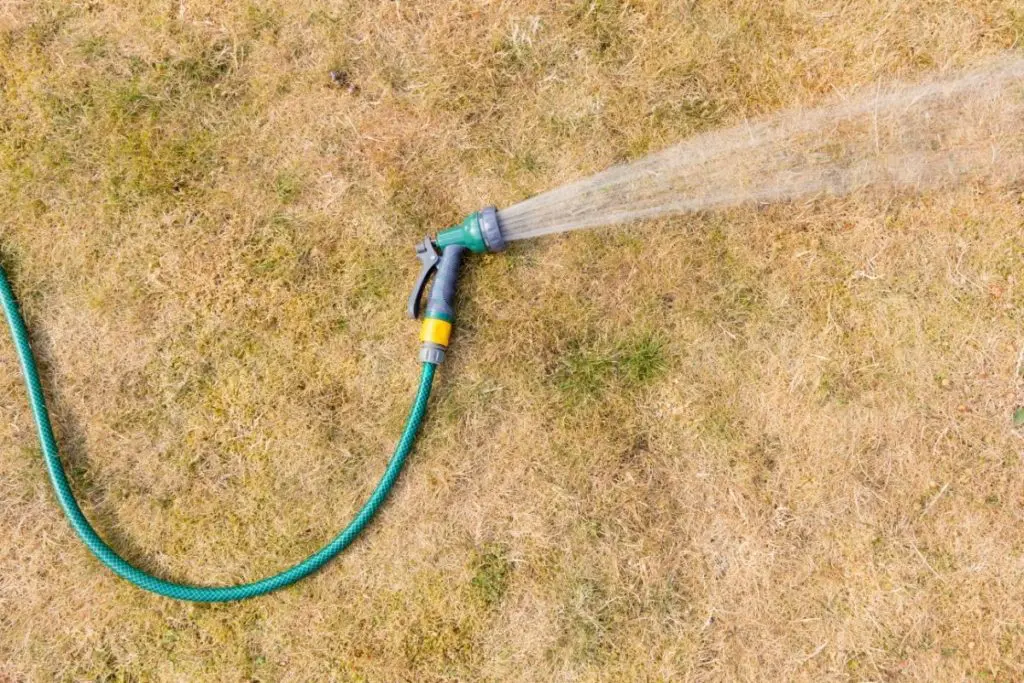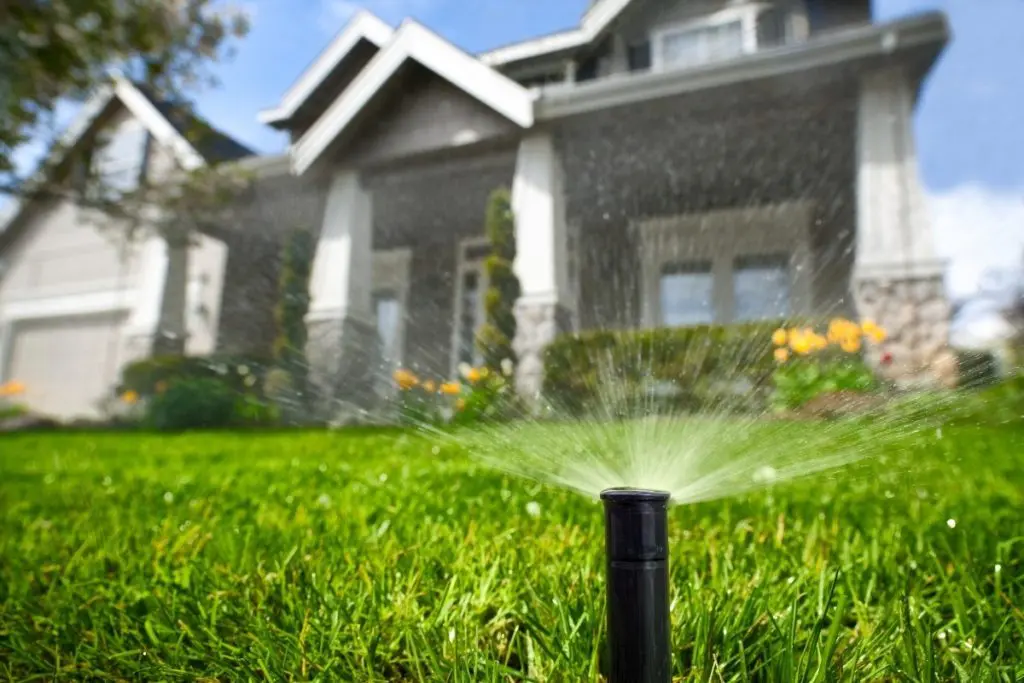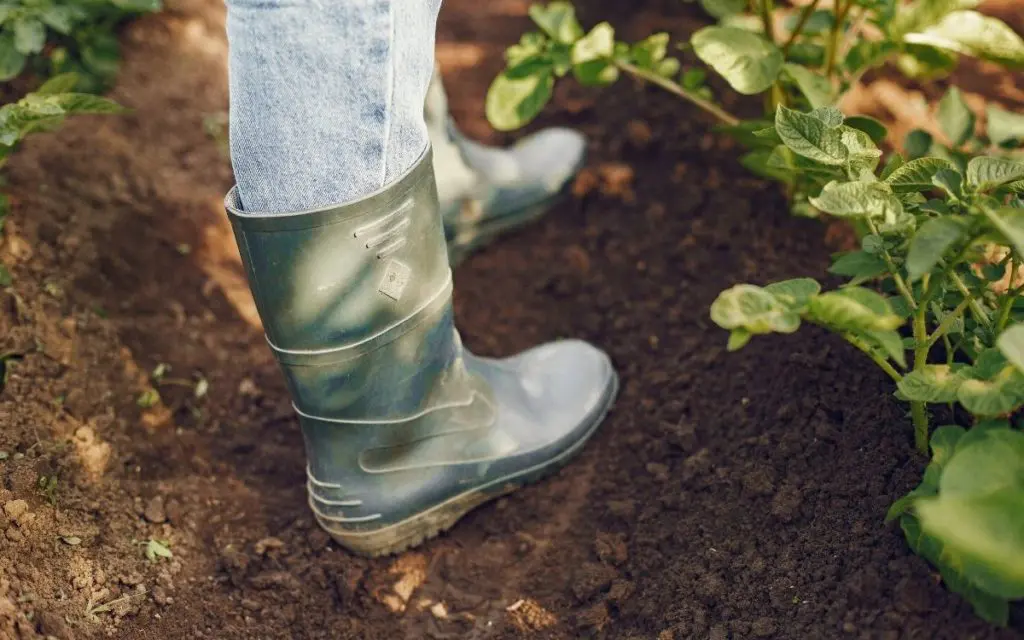My family recently tore out the old, weed-infested grass in both our front and back yard. After taking some time to enjoy our new lawn, it quickly became clear to my wife and I that it would take quite a bit of watering to keep it lush and green. We had our work cut out for us, and this got us talking: when exactly is the best time of day to water the lawn? My wife said in the morning, and I said evening. Wanna bet, she said?
Which one of us is correct? To settle the amicable quarrel, I looked into it, and here’s what I found out.
When is the Best Time of Day to Water Your Lawn: Early mornings Before 10 a.m.

Shortly after I began my research, I realized I was wrong. Generally speaking, the best time of day to water your lawn is in the morning, before 10 a.m. To my credit, I had the right idea: watering the lawn at night and not in the direct sunlight will cut down on evaporation, allowing the water to thoroughly soak into the turf, reaching the roots of the grass.
The thing is, though, watering the lawn at night also means the water will sit on the blades of grass all night long and not gradually evaporate throughout the day, which can lead to diseases. Furthermore, winds tend to be a little calmer in the mornings, so the water will go only where you want it to.
But what if you live in a particularly hot climate, or you’re at the height of summer? Could I win this marital bet on a technicality? That answer is coming up next.
Best Time of Day to Water Lawn in Hot Weather: Mornings between 6 a.m. and 8 a.m.

Ok, friends living in hot areas of the country. Turns out I am still wrong: the best time of day to water the lawn in hot weather, and for many of the same reasons, is in the mornings, just even earlier than you might otherwise water your grass. Evaporation is even more of a concern when the weather is warm, and you don’t want to be out there watering when it’s too hot, anyway.
It’s also best to water thoroughly and deeply rather than mist your grass a little bit throughout the day, and pay extra attention to any patches in direct sunlight.
We redid our lawn with turf, but what if we’d chosen grass seed? I also looked into the best time of day to water grass seed, seeking some small way I might be able to win this bet.
Best Time of Day to Water Grass Seed: Mornings between 4 a.m. and 8 a.m.

Nope, still wrong. If you’re watering grass seed, set your alarm for even earlier in the morning. Reasons why you want to water your grass seed so early in the morning are similar to why you want to water any kind of lawn early in the day: less wind, the right amount of evaporation, and plenty of time for the water to soak in nice and deep. Grass seed is particularly sensitive, so watering it even earlier in the day will give the seeds extra time to drink before it all dries out.
So we’ve pretty well settled it. The best time of day to water the lawn is mornings. But how often, and for how long, should you water? Those answers are coming up next.
How Often to Water Your Lawn: 20 minutes, 2-3 times per week

Rather than daily, it’s best to water thoroughly for about 20 minutes, two to three times a week. You want your lawn to get about an inch of each time you water. If your grass is showing any of the following signs, you may not be watering enough:
- It doesn’t spring back quickly after you step on it.
- The blades of grass are starting to curl up and shrivel.
Last, and perhaps the most obvious sign you need to water, is if your lawn is starting to lose it’s lovely green color and turn brown. That means it’s stressed and clearly not getting enough water. But when is enough water too much water?
In our next section, we’ll provide some handy tips to tell if you’ve overwatered or if the amount of water you’ve been putting on your lawn is just right.
When to Stop Watering The Lawn
When to stop watering the lawn depends a lot on the time of year, where you live, and how much precipitation you get in your area. Generally speaking, you want your grass to get about 1” to 1 ½” of precipitation per week, all year long, either from rain or your sprinkler.
Pro Tip:
One way to tell if your lawn is getting enough water is to put something like an old tuna fish can outside, wherever it won’t be sheltered from precipitation or shielded from your irrigation system. If the can fills up with water, your grass, too, has had enough to drink. Another test is to try and push something like a butter knife or screwdriver into the ground. If you can’t push it in about 6” or so, the turf needs some water.
Overwatering the lawn does carry with it some risks, including the following:
Risks of Overwatering the Lawn
1
You’ll Drown the Roots
Grassroots stay pretty shallow and are easily stressed by overwatering.
2
You’ll Encourage Weeds
It’s difficult to keep water where you want it and nowhere that you don’t want it. Overwater, and you may just be inviting some uninvited guests.
3
It’s Wasteful
Water is a valuable resource, and it’s best not to waste it by overwatering your lawn.
Another risk of overwatering your lawn is you may need to reapply fertilizer. That’s because too much water will wash the fertilizer straight past the roots without giving it enough time around the roots.
Grassroots Conclusion
Well, it looks like there was no way I would be able to win this one.
The best time of day to water the lawn is in the morning before 10 a.m. and before 8 a.m. if the weather is hot. Suppose you’ve recently planted grass seed, water as early in the day as possible, sometimes as early as 4 a.m. It’s best to water two or three times a week and give your grass about an 1” to an 1 ½” each time you water. This typically takes about 20-minutes per watering session.
What’s also true, though, is that when it comes to watering the lawn, experts agree: some water is better than no water, whether that water comes morning, noon, or night.
So in the case of the friendly marital disagreement about the best time to water our new lawn, I’m going to call it a draw.
Further Reading






